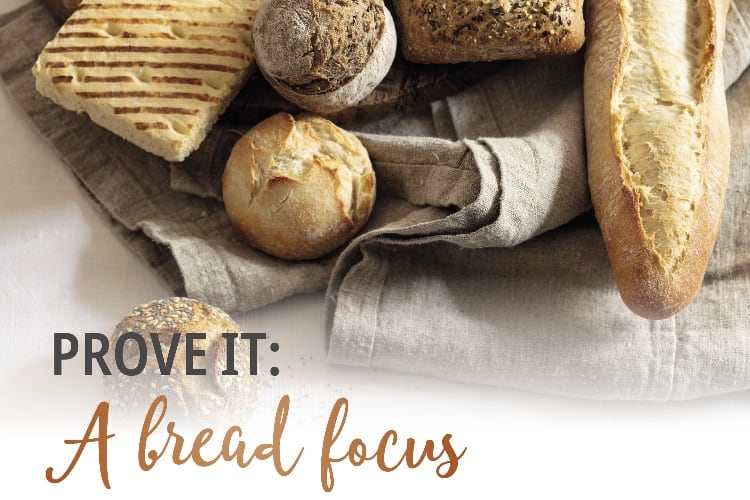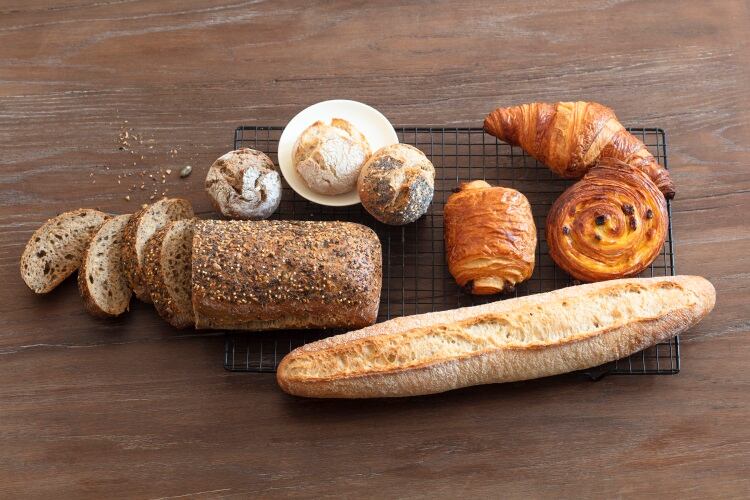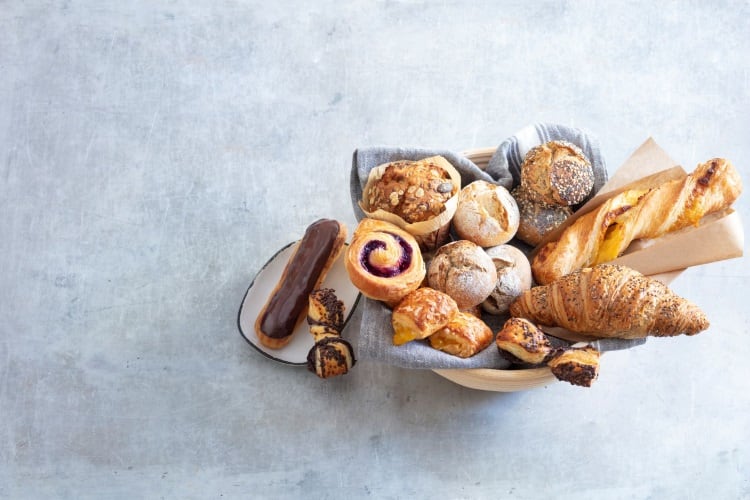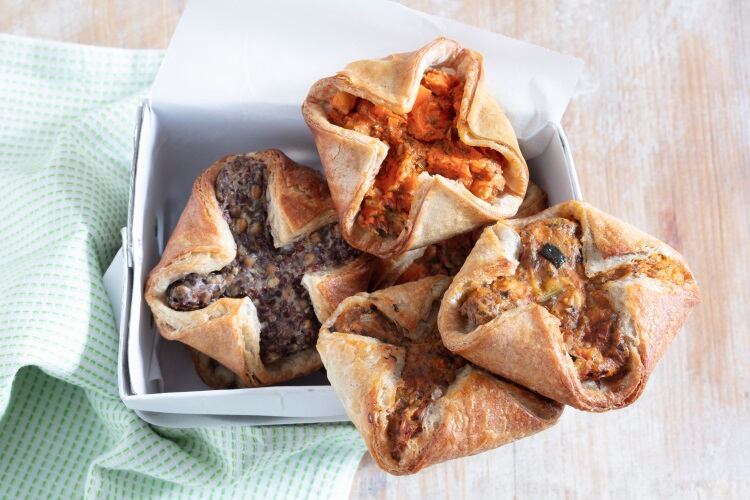The deep dive into the bread and viennoiserie categories found that 70% of consumers surveyed said their consumption of bakery products had not changed during the pandemic. However, factors like health, sustainability, indulgence and COVID-related hygiene concerns are impacting the sector.
While the pandemic has certainly given impetus to the health and wellness trend, indulgence continues to be an important trend as consumers look for speciality breads and viennoiserie.
Earlier this year, BakeryandSnacks reported on Délifrance’s research on the viennoiserie category, which found that 79% of consumers consider taste to be the key factor when choosing an indulgent treat, compared to 61% placing freshness at top spot, and 49% pinpointing price.
Prove It: A Bread Focus
Délifrance’s report reveals that taste remains the key purchasing decision amongst 95% of Brits.
72% of British households buy bread at least weekly, with 80% purchasing both packaged bread and fresh bread from instore bakeries. 71% opt for packaged bread (up 67% from 2019), driven by the concern about the hygiene of products sold at instore bakeries. However, 29% veer towards fresh (of which 70% is frozen bake-off products) and this is expected to grow to 34% by 2025.
There were more weekly shops in 2020, plumping up packaged bread volumes by 8.4%. However, fresh witness an 11.6% decline, partially offset by frozen bake-off, which saw a slightly slower decline of 9.7%.
While the core trio of white, brown and wholemeal retain their status as staples, consumers are also opting for the more premium and indulgent options like sourdough, tiger bread and rye.
Interestingly, for those looking for an added health benefit from their bread, 17% want more vitamins and nutrients, and 14% desire more cereals, grains and dried fruit inclusions.

“The UK bread market is currently worth £7.5bn [according to strategic consultancy and market research firm Gira]. As some 41% of consumers eat bread every day or almost every day, there are plenty of opportunities to reach staple bread fans and new consumption occasions, particularly when we take into account that we expect to see increased indulgence and health-based snacking in the category,” said Stéphanie Brillouet, marketing director for Délifrance.
“Indeed, our research reveals that healthier options could encourage 21% of consumers to eat more bread.
“With the new hybrid working model set to continue, the report also includes invaluable advice and tips on how retailers and operators can maximise on this way of life, from highlighting ‘added value’ ingredients and sustainable packaging to making a limited menu more versatile through bread choices.”
Other key findings from Prove It include:
- Consumers eat the most bread at lunch (57%), followed by breakfast (29%) then dinner (24%). This opens plenty of opportunities for bakers, retailers and foodservice operators to tap into other occasions, like snacking.
- 13% of consumers will probably choose something different at the weekend, such as sourdough, rye, Italian-style breads, breads with inclusions and baguettes.
- The most common ways to enjoy bread include a sandwich (56%), as toast (39%) or as a side dish (20%).
- 17% buy seeded loaves at least once a week. These consumers are more likely to be interested in ingredients than the average bread consumer and less concerned about price, indicating there is a link between health benefits and a willingness to spend
- 44% would like to see more breads with added ingredients such as nuts and seeds for health, cheese and olives for indulgence.
- Sliced white bread remains the favourite amongst Brits, with baguettes retaining the French consumers’ fancy, seeded bread appealing to Germans and durum wheat or semolina breads attracting the Italians.
- Consumers continue to look for minimal use of additives and more focus on natural ingredients. 7% say organic is important to quality, while 7% are looking for cleaner products with no additives and no use of pesticides.
- Minimising waste is high on the agenda, not only for consumers but for manufacturers as well. However, although a producer will take every precaution to limit waste, at the end of the day there will still be some leftover products. Délifrance has developed the No Waste All Taste initiative to help operators upcycle yesterday’s bread or viennoiserie.
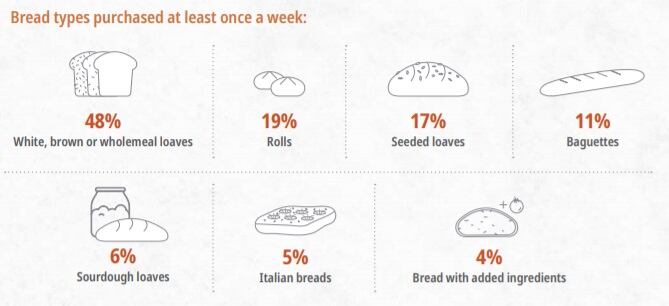
According to food trend experts Lisa Harris and Alexandra Hayes, as consumers increasingly work from home, they want lunch and breakfast to feel like an escape.
“Bread is a core ingredient to both occasions, so it’s well placed for accessible and inspiring NPD. Sandwich alternative bread sales were up 26% in March 2020 compared with the same time last year. For example, the TikTok tortilla wrap hack dominated lockdown kitchens as consumers were hungry for a new way to make a sandwich.”
They also believe that bread as an evening snack or a mid-morning energy-boost will gain traction, especially options that come with health-based snacking messaging.
In conclusion, Délifrance expects to see continued growth in the bread market, with the dynamic between packaged and fresh returning to pre-COVID trends. Bake-off bread is set to see the strongest growth over the next five years.
COVID and Brexit have undoubtedly had an impact on consumer behaviour – and how operators and retailers can do business – however, the category remains a wide open avenue for new experiences and opportunities.
“Over the past year, the category caught the attention of locked-down consumers and experimentation has driven greater interest in aspects such as alternative flours and bread with inclusions,” added Brillouet.
“As consumers become more interested in ingredients and baking in the home, their expectations of what they can buy in store will be higher.
“Fresh bread not only adds choice to an instore bakery, but by using strong artisan bakery cues when displaying bread and focusing on freshness, customers will soon be lured back to the bakery aisle.”
The survey findings were drawn from interviews with UK adults who regularly eat bread, as well as research conducted in France, Germany and Italy. In addition, data was obtained from social listening tool Delve Insights that monitors thousands of online conversations to identify consumer trends.


